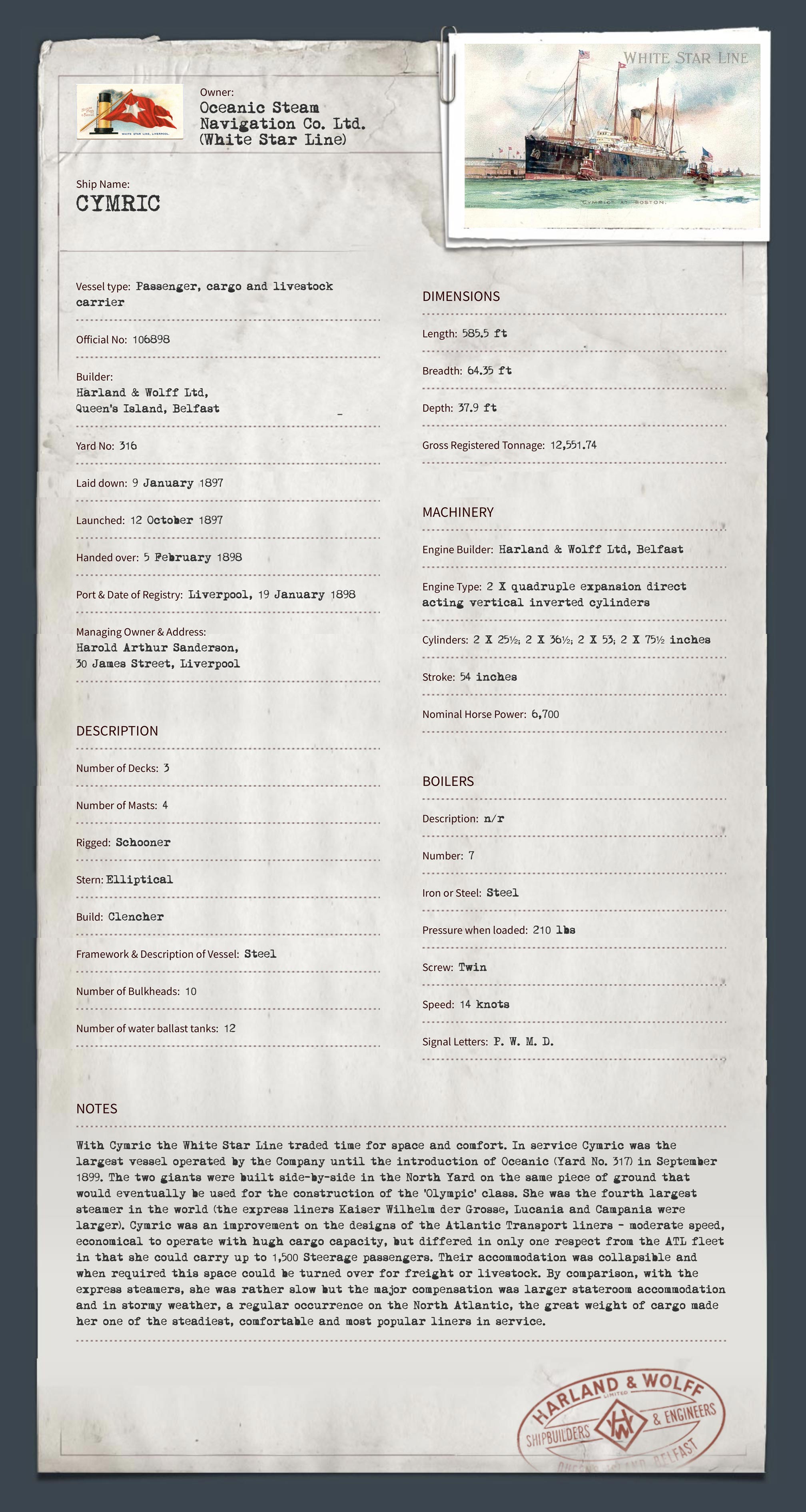Cymric Fact File
Owner: Oceanic Steam Navigation Co. Ltd. (White Star Line)
Ship Details
Details
Vessel Type: Passenger, cargo and livestock carrier
Official No: 106898
Builder: Harland & Wolff Ltd, Queen's Island, Belfast
Yard No: 316
Laid down: 9 January 1897
Launched: 12 October 1897
Handed over: 5 February 1898
Port & Date of Registry: Liverpool, 19 January 1898
Managing Owner & Address: Harold Arthur Sanderson, 30 James Street, Liverpool
Description
Number of Decks: 3
Number of Masts: 4
Rigged: Schooner
Stern: Elliptical
Build: Clencher
Framework & Description of Vessel: Steel
Number of Bulkheads: 10
Number of water ballast tanks: 12
Dimensions
Length: 585.5 ft
Breadth: 64.35 ft
Depth: 37.9 ft
Gross Registered Tonnage: 12,551.74
Machinery
Engine Builder: Harland & Wolff Ltd, Belfast
Engine Type: 2 X quadruple expansion direct acting vertical inverted cylinders
Cylinders: 2 X 25½; 2 X 36½; 2 X 53; 2 X 75½ inches
Stroke: 54 inches
Nominal Horse Power: 6,700
Boilers
Description: n/r
Number: 7
Iron or Steel: Steel
Pressure when loaded: 210 lbs
Screw: Twin
Speed: 14 knots
Signal Letters: P. W. M. D.
NOTES
With Cymric the White Star Line traded time for space and comfort.
In service Cymric was the largest vessel operated by the Company until the introduction of Oceanic (Yard No. 317) in September 1899. The two giants were built side-by-side in the North Yard on the same piece of ground that would eventually be used for the construction of the 'Olympic' class. She was the fourth largest steamer in the world (the express liners Kaiser Wilhelm der Grosse, Lucania and Campania were larger).
Cymric was an improvement on the designs of the Atlantic Transport liners - moderate speed, economical to operate with huge cargo capacity, but differed in only one respect from the ATL fleet in that she could carry up to 1,500 Steerage passengers. Their accommodation was collapsible and when required this space could be turned over for freight or livestock. By comparison, with the express steamers, she was rather slow but the major compensation was larger stateroom accommodation and in stormy weather, a regular occurrence on the North Atlantic, the great weight of cargo made her one of the steadiest, comfortable and most popular liners in service.

